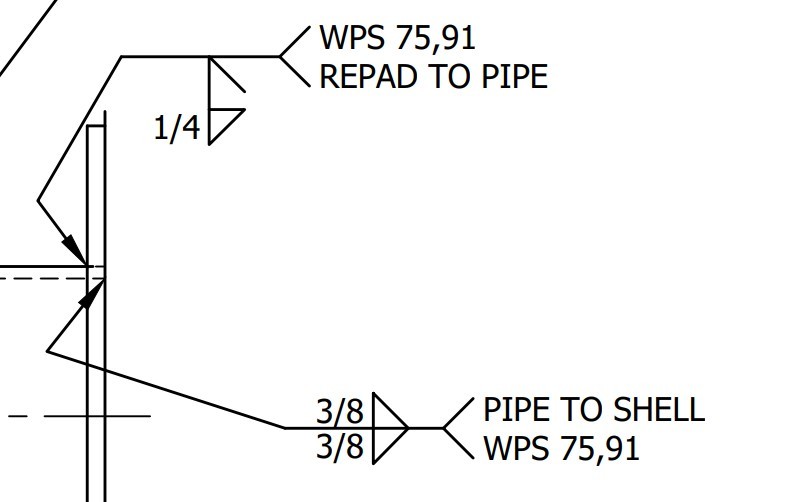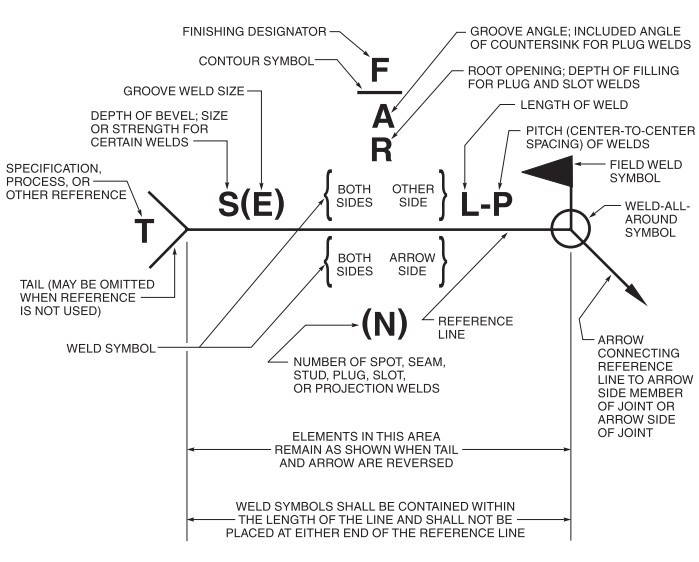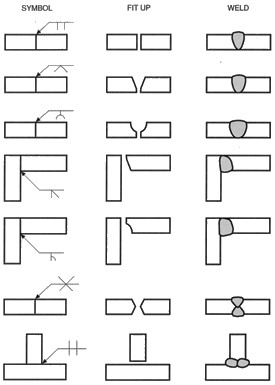
Weld symbols are critical in any ASME code design and technical drawing. They serve as a universal language between the designer, customer, and the welder, ensuring that all requirements for each weld are clearly communicated and understood. A properly annotated weld symbol provides complete information about the weld, including joint configuration, weld type (e.g., fillet, groove, plug), welding process, size and length of the weld, contour and finish requirements, and any additional instructions such as root openings or backing.
The industry standard for weld symbols is the American Welding Society (AWS) standard AWS A2.4 – Standard Symbols for Welding, Brazing, and Nondestructive Examination. This standard ensures that weld symbols are interpreted consistently across industries and disciplines, reducing the risk of miscommunication and fabrication errors. In ASME code work, adherence to these symbols is required to meet regulatory and quality assurance standards.
By using weld symbols correctly, designers and engineers can minimize errors and ensure that welders have all the necessary information to produce structurally sound and code-compliant welds.









